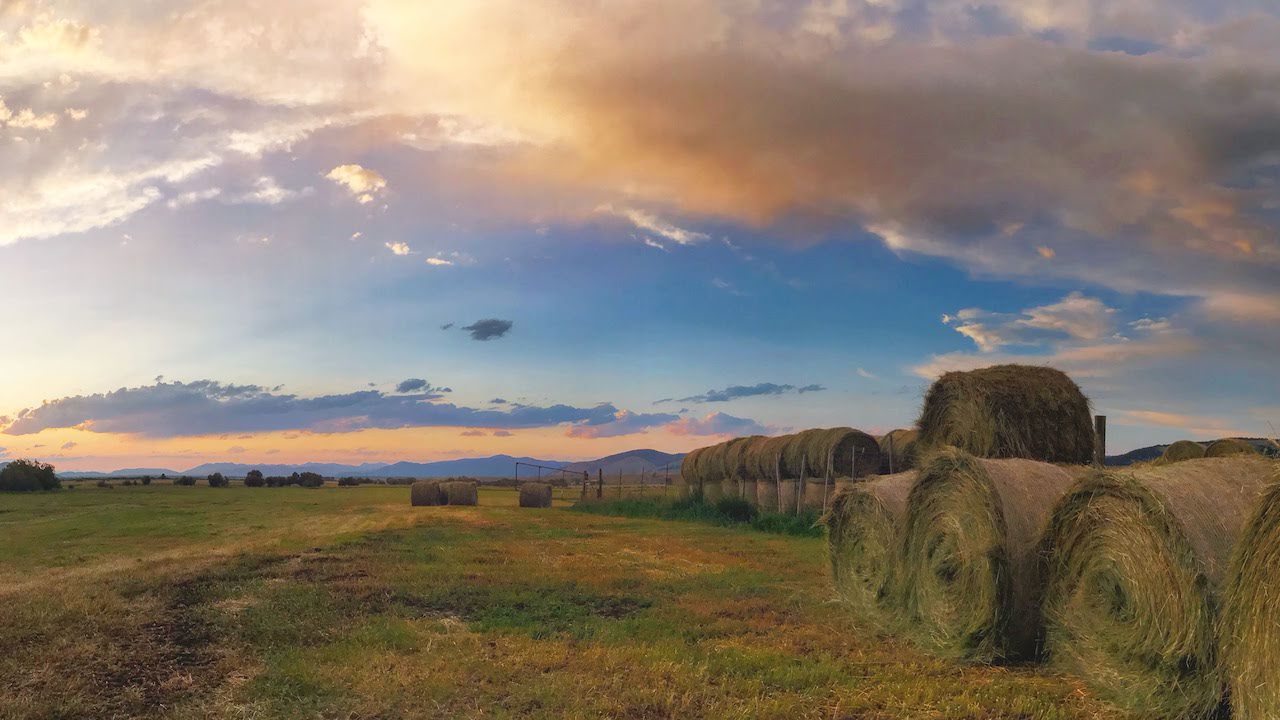2019 Fall Update

Late summer sunset over haystacks at the Mannix Ranch, Blackfoot Valley, Montana. Photo: Ada Smith.
Welcome to the November 2019 Montana Drought & Climate newsletter. We hope that Montana farmers and ranchers find the information here useful. Please send us your feedback!
Here’s what you’ll find in this newsletter:
Summer 2019 Review — Understanding current and past conditions aids in predicting future conditions. This section provides an overview of how this spring is progressing.
Winter Forecast — The seasonal forecast discusses predictions for temperature, precipitation, and drought, as well as the global air circulation patterns that impact growing conditions and water availability in Montana.
Mid-century Outlook — What do Montanans need to do to prepare for the future? In this section we present projections of mid-century conditions across Montana. Comparing these projected conditions to current or past conditions gives an improved understanding of how to respond to a changing climate.
Reference — A helpful glossary of terms found in this newsletter.
In Brief
- Summer across eastern Montana was cooler than normal and very wet, leading to delays in crop development.
- Soil moisture continues to be high across Montana, especially in the east.
- The NOAA seasonal forecast for December through February is for slightly warmer and wetter than normal conditions across most of Montana.
We want to hear from you!
Please send us stories, photos, feedback, and questions! Your story about how you use this information, photos of your farm or ranch, or your question could be featured in the next newsletter.
Please contact mtdrought@umontana.edu
with questions and comments, or to be added to our mailing list.
About Montana Drought & Climate
and the Montana Climate Office
Montana Drought & Climate is a USDA-funded project of the Montana Climate Office (MCO) at the W.A. Franke College of Forestry & Conservation at the University of Montana, in collaboration with the Montana State University Extension Service. The MCO is an independent state-designated body that provides Montanans with high-quality, timely, relevant, and scientifically-based climate information and services. We strive to be a credible and expert source of information for decision makers that rely on the most current information on climate to make important decisions. It is also the role of the MCO to assist stakeholders in interpreting climate information or adapting climate products to their needs.
Production of this newsletter is supported by Water for Agriculture Challenge Area grant no. 2017-67027-26313 from the USDA National Institute of Food and Agriculture and by the Montana Water Center. Any opinions, findings, conclusions, or recommendations expressed in this publication are those of the author(s) and do not necessarily reflect the view of the U.S. Department of Agriculture, the Montana Water Center, or the University of Montana. Please refer to the Montana Climate Office user agreement and disclaimer at climate.umt.edu/disclaimer.

Montana Climate Office
Montana Forest & Conservation Experiment Station
University of Montana
32 Campus Drive
Missoula, MT 59812
P: (406) 243-6793
E: mtdrought@umontana.edu
W: https://climate.umt.edu/